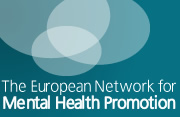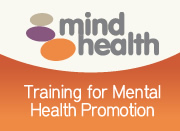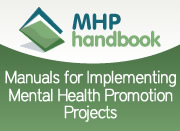Tools
- Utilities:
- Print this page
- Send this page
- Font size:
- Increase font size
- Decrease font size
European Alliance Against Depression (EAAD)
01/04/2008
Tool Information
Tool Description
The “European Alliance Against Depression (EAAD)” is committed to the care of depressed patients and prevention of suicidality in Europe. This aim is being realised by implementing community-based intervention programmes on four different levels. Co-operation with general practitioners and paediatricians: GPs and paediatricians are invited to educational workshops on how to recognise and treat depression and explore suicidality in the primary care setting. Information material (e.g. video tapes) are distributed that can be handed out to patients. Via a hotline GPs and paediatricians can consult a specialist concerning the treatment of individual cases of depression in their practice. Public Awareness Campaign: The broad public will be addressed by large-scaled public awareness campaigns including posters, cinema spots, information leaflets, brochures, public events and internet homepages. The aim is to improve the knowledge about adequate treatments of depression and to reduce the stigmatisation of the topic “depression” and the affected individuals. A close co-operation with the media takes place to strengthen the public discussion. Special guidelines on media coverage of suicidality are distributed to prevent imitative suicides. Training sessions for multipliers: Educational workshops are provided to various target groups ( e.g. health care professionals, priests, counsellors, police) playing an important role in disseminating knowledge about depressive disorders. Particular emphasis is put on special offers for parents, youth workers and teachers in order to reach children and adolescents suffering from depression, deliberate self harm and suicidal behaviour (e.g. information sessions and prevention programmes in schools). Offers for high risk groups and self-help activities: "Emergency Cards” are handed out to high risk groups, first of all young people in adolescent crisis and persons after suicide attempt) guaranteeing direct access to professional help in a suicidal crisis. Initiatives are started to found regional self-help groups and support them with expert advice. Partnerships with patient associations are being established and intensified.Evaluation Description
The community-based intervention programme was implemented in a pilot study in Nuremberg and showed clearly effective in reducing suicidality and in improving the care of depressed patients. Compared to the control region, a significant reduction in frequency of suicidal acts was observed in Nuremberg during the 2-year intervention (2001 vs. 2000: -19.4%; P<0.1; 2002 vs. 2000: -24%, P<0.005). Considering suicide attempts only (secondary outcome criterion), the same effect was found (2001 vs. 2000: -18.3%, P<0.05; 2002 vs. 2000: -26.5%, P<0.001). The reduction was most noticeable for high-risk methods (e.g. hanging, jumping, shooting). Additional analyses of the year after the end of the intervention (2003) revealed a further reduction of the frequency of suicidal acts in Nuremberg (2003 vs. 2000; -32.2%; P<0.001) (Hegerl et al., 2006). Further analyses (changes in media coverage, changes in prescription of antidepressants) supported the efficiency of the intervention programme, whereas no systematic effects on public attitude towards depression were detected (Hegerl et al. 2003).



